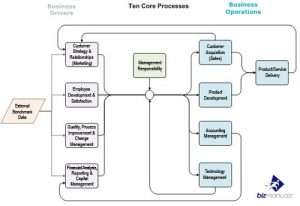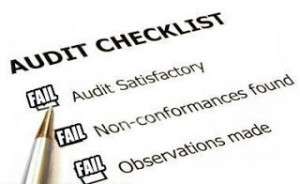Ensuring SOP Compliance in Your Business

As a business owner, one of your top priorities is ensuring your company operates efficiently, effectively, and ethically. To achieve these goals, you must establish and maintain standard operating procedures (SOPs) that outline the processes and procedures employees must follow to perform their jobs successfully. SOPs help your organization achieve consistency, reduce errors, enhance safety and quality, and reduce risk. In this article, we’ll discuss how ensuring compliance with SOPs in your business benefits your company.
The Importance of SOP Compliance
SOP compliance is critical to the success of your business. Standard operating procedures provide a clear path for employees to follow, ensuring consistency and minimizing the risk of errors. They also help your organization meet regulatory requirements, minimize your legal liability, and improve the quality of your products and services. When employees fail to follow SOPs, your company is at risk of inefficiencies, safety hazards, legal complications, customer dissatisfaction, and potential regulatory violations.
Defining Standard Operating Procedures (SOPs)
SOPs are detailed, step-by-step instructions that describe how to perform a specific task, process, or procedure. The purpose of SOPs is to ensure consistency in how tasks are performed and to enable new employees to learn how to perform a task without extensive training. SOPs should be written in a clear and concise manner, outlining each step of the process to ensure consistency and accuracy.
For example, in a manufacturing plant, SOPs may outline the steps for assembling a product, including the specific tools and equipment to be used, the order in which the parts should be assembled, and the quality control checks that must be performed at each step. In a healthcare facility, SOPs may outline the steps for administering medication to patients, including the dosage, the method of administration, and the documentation requirements.
Benefits of SOP Compliance for Your Business
Compliance with SOPs has many positive benefits for your business, including:
- Higher quality products and services: When employees follow SOPs, they are more likely to produce consistent, high-quality products and services that meet customer expectations.
- Improved consistency and efficiency of operations: SOPs help to standardize processes, making them more efficient and consistent across different employees and departments.
- Reduced errors and safety hazards: SOPs provide clear guidance on how to perform tasks safely and accurately, reducing the risk of errors and safety hazards.
- Faster employee onboarding and training: With clear SOPs in place, new employees can quickly learn how to perform tasks without extensive training, reducing the time and resources required for onboarding.
- Improved customer satisfaction and loyalty: Consistent, high-quality products and services lead to greater customer satisfaction and loyalty.
- Higher employee morale and engagement: When employees have clear guidelines to follow, they are more likely to feel confident and engaged in their work.
- Mitigation of legal and regulatory risk: SOPs help to ensure that your business is in compliance with legal and regulatory requirements, reducing the risk of legal complications and regulatory violations.
Risks of Non-Compliance
Non-compliance with SOPs can have serious negative consequences for your business, including:
- Dangerous safety hazards leading to accidents and injuries: When employees don’t follow SOPs, they may be more likely to make mistakes that lead to safety hazards and accidents.
- Reduced product and service quality, leading to customer complaints: Inconsistent products and services can lead to dissatisfied customers and damage to your reputation.
- Lower productivity and decreased efficiency: When employees don’t follow SOPs, processes may take longer and be less efficient, reducing productivity.
- Increased legal and regulatory risk: Non-compliance with legal and regulatory requirements can lead to fines, legal complications, and damage to your reputation.
- Damaged reputation and loss of business: Non-compliance can damage your reputation and lead to loss of business.
Overall, SOP compliance is essential for the success of your business. By ensuring that your employees follow clear, detailed procedures, you can improve the quality of your products and services, reduce the risk of errors and safety hazards, and mitigate legal and regulatory risk.
Developing Effective Standard Operating Procedures
Developing effective SOPs requires careful planning and execution. Here are some best practices to follow:
Identifying Key Processes and Procedures
The first step in developing effective SOPs is to identify the key processes and procedures that require standardization. To do so, conduct a thorough review of your business operations and identify any areas where consistency is necessary. This may include areas such as customer service, manufacturing processes, or financial reporting.
Once you have identified these areas, assemble a cross-functional team to oversee the development of the SOPs. This team should include representatives from each department involved in the process, as well as any subject matter experts who can provide valuable insight.
During the review process, it is important to consider any regulatory requirements that may apply to your business. This can include industry-specific regulations, as well as general health and safety regulations.
Involving Stakeholders in SOP Development
It is essential to involve stakeholders in the development of SOPs. Stakeholders can include employees, management, internal auditors, external auditors, and customers. Involving stakeholders in the process ensures that SOPs are accurate, relevant, and realistic.
When involving stakeholders, it is important to consider their different perspectives and priorities. For example, employees may be more concerned with the practical aspects of the SOPs, while auditors may be more focused on ensuring compliance with regulations.
By involving stakeholders in the development process, you can also gain buy-in and support for the new SOPs. This can help to ensure that employees are more likely to follow the procedures and that the SOPs are more effective overall.
Documenting and Standardizing Procedures
When documenting procedures, use clear and concise language to explain each step of the process. This can include using diagrams or flowcharts to help illustrate complex processes. It is also important to use consistent terminology throughout the document to avoid confusion.
Standardize the format of the documents to improve consistency and make them easier to understand. A consistent format ensures that employees can easily follow the procedures and understand their role in each step. This can also help to ensure that auditors are able to easily review and assess the effectiveness of the SOPs.
It is important to regularly review and update SOPs as needed. This can include incorporating feedback from employees or making changes in response to regulatory requirements.
Implementing Change Management Strategies
Ensure that you have a change management strategy in place for implementing the new SOPs. This can include communication plans, training programs, and feedback mechanisms to ensure that employees are prepared for the changes.
Communicate with all employees affected by the changes, providing clear explanations of the reasons for the changes and how they will impact their work. This can help to reduce resistance to the changes and increase buy-in from employees.
Provide training on the new SOPs, including any changes to existing processes or procedures. This can include hands-on training or online training modules, depending on the needs of your organization.
Create a feedback mechanism so employees can give input and ask questions. This can include regular check-ins with managers or anonymous feedback channels to ensure that employees feel comfortable providing honest feedback.
By implementing change management strategies, you can help to ensure a smooth transition to the new SOPs and increase the likelihood of their success.
Training and Educating Employees on SOPs
Training and educating employees on SOPs is crucial to achieving compliance. It is important to ensure that all employees understand the importance of following SOPs and the potential consequences of non-compliance. Here are some best practices for training:
Creating a Comprehensive Training Program
Develop a comprehensive training program that includes all employees impacted by the SOPs. This should include both new hires and existing employees. Ensure that the training program covers all aspects of the SOPs, including the reasons for the SOPs and how to follow them correctly. The training program should also cover any updates or changes to the SOPs.
It is important to involve employees in the development of the training program. This can be done through focus groups or surveys to gather feedback on what employees find most helpful in training programs.
Utilizing Various Training Methods
Utilize a variety of training methods to ensure that all employees have access to the information they need to follow the SOPs correctly. This can include hands-on training, computer-based training, job aids, and demonstrations. Tailor the training to the learning style of individual employees to ensure that they are able to absorb and retain the information.
It is also important to ensure that the training is accessible to all employees, including those with disabilities or language barriers. Consider providing translations or accommodations as needed.
Ensuring Continuous Learning and Improvement
Continuous learning is essential to ensure that employees remain compliant with SOPs. Provide ongoing training and refresher courses to ensure that employees remain knowledgeable and skilled. This can include regular meetings or workshops to discuss any updates or changes to the SOPs.
Encourage employees to ask questions and provide feedback on the training program. This can help identify areas for improvement and ensure that the training program remains effective and relevant.
Evaluating Employee Competency and Understanding
Evaluate employee competency and understanding of SOPs to ensure that they know what is expected of them. Regular evaluations also provide opportunities to identify areas for improvement. This can include quizzes or assessments to test employee knowledge of the SOPs.
It is important to provide constructive feedback to employees based on their evaluations. This can help them improve their understanding of the SOPs and ensure that they are following them correctly.
Overall, training and educating employees on SOPs is a critical component of achieving compliance. By developing a comprehensive training program, utilizing various training methods, ensuring continuous learning and improvement, and evaluating employee competency and understanding, organizations can ensure that their employees are following SOPs correctly and effectively.
Monitoring and Auditing SOP Compliance
To ensure compliance with SOPs, you need to monitor and audit their implementation. Here are some best practices:
Establishing Key Performance Indicators (KPIs)
Establish KPIs to measure compliance with SOPs. Monitor these KPIs regularly to ensure that employees are following the procedures.
Conducting Regular Internal Audits
Conduct regular internal audits to ensure compliance with SOPs. An internal audit provides an opportunity to identify areas where processes can be improved and to ensure that employees are following the established procedures.
Addressing Non-Compliance Issues
Address non-compliance issues as soon as possible. Identify the root cause of the issue and take corrective action to ensure that it does not happen again.
Utilizing External Audits for Objective Assessment
Utilize external audits to provide an objective assessment of your compliance with SOPs. External auditors can identify areas of improvement and provide suggestions for enhancing your SOPs.
SOP Compliance
Ensuring SOP compliance in your business is critical to achieving success and avoiding risks. Develop effective SOPs, train employees on them, and monitor and audit compliance to ensure that your business operates safely, efficiently, and effectively.
















Leave a Reply